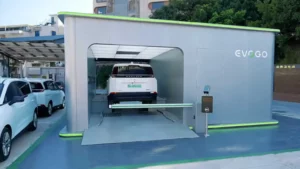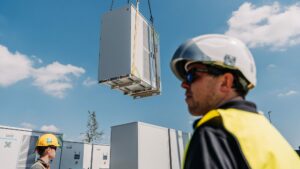Space Debris: An underestimated danger?
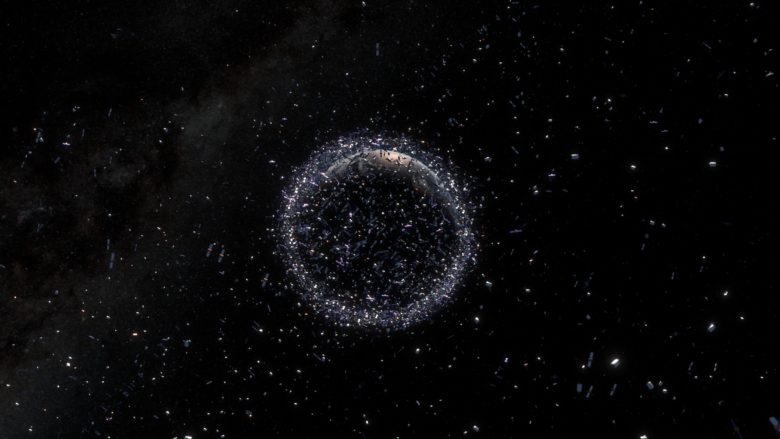
In future, anyone who wants to be present at a rocket launch will no longer have to fly all the way to Russia or the USA. In the UK, rockets are to be launched into space as early as this summer. The British government announced this in May 2021. However, no Kennedy Space Centre like in the USA can be expected: “We won’t be building Cape Canaveral,” explains Scott Hammond, operations manager of the Shetland Space Centre in an interview with BBC Future: “The biggest rocket will be about 30 metres tall – compared to what flies at Cape Canaveral, that’s a real pipsqueak!”
These ” tiny” rockets are enough to get microsatellites like the one from the startup OroraTech into space, we reported. This new generation of satellites are often no bigger than shoeboxes but perform important tasks along with the big ones. They provide navigation services, telecommunications, weather forecasting, climate monitoring and television broadcasting, among many other important services. Thus, we are now and in the future depending on those flying objects. In fact, more and more private companies are sending their satellites into orbit to provide further services.
SpaceX and OroraTech send first forest fire monitoring satellite into space
Millions of particles of space debris in our orbit
Each new satellite joins the existing ones in orbit. Opinions differ somewhat on how many there are so far, depending on which measurement method the institute uses. According to the ESA, the number at the beginning of the year was around 5,000 active satellites. In addition, however, there are more than 2,800 defective satellites, more than 1,900 discarded rocket stages and millions of other pieces of space debris ranging in size from just one millimetre to ten centimetres. These figures also differ somewhat depending on the measurement method, but the exact numbers would not change the conclusion in any of the variants: “I think that all the figures, even if they differ somewhat between Esa and Nasa, boil down to the fact that there is too much space debris. I think everyone agrees on that,” says Nina Klimburg-Witjes, a researcher at the University of Vienna’s Institute for Science and Technology Research, in an interview with Tech & Nature.
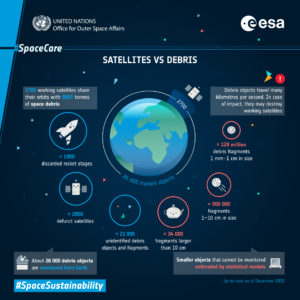
Kessler Syndrome
This space debris problem is not a phenomenon of modern times. As early as the late 1970s, Donald J. Kessler, a NASA scientist, described the gradual increase in space debris in the “Kessler Syndrome” named after him. This happened through random collisions, which in turn caused debris particles, which in turn triggered collisions. Klimburg-Witjes, therefore, explains the scientist’s prediction as follows: “At some point, the Earth will be enclosed under a layer of junk, even if we were to stop sending up satellites from today and also stop doing space travel.
Risks from space debris
According to Klimburg-Witjes, experts agree that this future scenario is a great risk for space travel, but also for life on Earth. This does not mean, that people on Earth have to fear being accidentally hit by a piece of space debris. The much bigger risk is that the infrastructure we depend on (GPS, telephone network, internet…) can be destroyed by satellite parts. “This could make some services from space that we are used to today impractical, expensive or even impossible,” said Holger Krag, Head of the Space Safety Programme Office at ESA, when asked by Tech & Nature. In addition, astronauts on the ISS are repeatedly put at risk when parts of the ISS are destroyed. No mountains of rubbish are needed to cause such damage. “With average impact velocities of about 10 km/s between space objects, even small pieces can have a mission-ending effect,” says Krag.
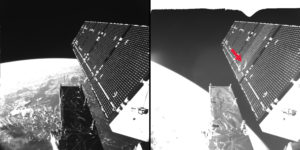
Thus, thousands of potentially mission-ending particles are already in our orbit. However, the situation in our current “new space age” is not only aggravated by the increasing commercial use of space. According to researcher Nina Klimburg-Witjes, space is also becoming increasingly militarized. In so-called anti-satellite tests, space nations like the USA, China, India or Russia shoot down their own satellites with rockets. This way, they know that should it ever be necessary, shooting down satellites of hostile states would also be possible. The last such test was carried out by Russia last November. The destruction of the satellite resulted in 1,500 additional pieces of debris, which directly endangered the astronauts of the ISS, Ralf Krauter told Deutschlandfunk.
Space tourism – technological advancement or a threat to the environment?
Regulations based on voluntariness
Although space debris can thus pose a direct danger to humans, the creation of such debris usually remains without consequences. In the case of most accidental collisions, this is mainly due to the fact that it is not possible to clearly determine who is responsible for the damage, says researcher Klimburg-Witjes. There are no laws for this, as no government has the authority to draw up strict rules and laws concerning space, according to the ESA.
Only the UN and the United Nations Office for Outer Space Affairs can regulate how to deal with global commons space on a voluntary basis. However, this must be seen more as an attempt to get the various actors around the table and give them more responsibility than as binding law, says Klimburg-Witjes. Only once has a space law been drafted. But the so-called Outer Space Treaty, or in long the “Treaty on Principles Governing the Activities of States in the Exploration and Use of Outer Space, including the Moon and Other Celestial Bodies”, of 1967 has long been outdated and hardly provides any regulations for space debris and the activities of private actors, according to the researcher.
Nevertheless, even the existing version of the Outer Space Treaty states that objects in space are and remain the property of the launching state, which is the country that sent the object up. Therefore, these countries are also responsible for ensuring that their objects do not cause any damage. In order to be able to derive consequences from this, it would have to be possible to prove which state owns which satellite.
Competitive disadvantage for “emerging space nations”
Some countries refuse to tighten these regulations, at least according to Klimburg-Witjes. There are several reasons for this. One is, that countries that have not been in the “space race” from the beginning are just as affected by the impact of the big players as the USA, Russia and China themselves. They do not want to invest their often smaller resources in “cleaning up” after the big nations. They see the responsibility for sustainability with the “big players”, who of course have also contributed the most to littering, says Klimburg-Witjes. Strict regulations, which the other space nations did not have at the start, would mean additional competitive disadvantages for the “emerging space nations”, she says.
Bulgarian EnduroSat plans to launch a space weather satellite in 2022
ESA “Build-In” Technologies
Of course, this does not solve the problem of space debris. Therefore, there are already various approaches to solving the problem. ESA itself is focusing primarily on improving future spacecraft. According to the Head of the Space Safety Programme Office of the ESA, most debris today is caused by explosions. These are to be prevented in future by developing technologies for draining/passivating fuel and pressure tanks and for producing safe batteries and other residual energy on board. Furthermore, additional kits are to be installed on board in the future before launch to bring the spacecraft out of orbit if it is no longer functional itself. When it needs to be towed, so to speak.
Another approach, he said, is “design-for-demise”. “It means to change critical components and replace them by variants that melt-up completely during re-entry for better on-ground safety,” says Holger Krag.
However, these are all only solutions for flying objects that are still on Earth at this point. According to the Kessler Syndrome even the previous debris would already have to be removed in order to make future space travel possible. Perhaps the best-known project to tackle this is ESA’s flagship Cleanspace-1 mission. The space mission is scheduled to launch in 2025 and will be the first of its kind to remove debris from Earth orbit.
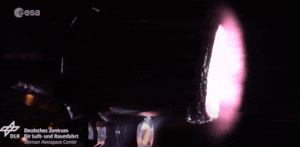
Waste disposal by start-ups
But it is not only official authorities like the ESA, that are working on attempts to clean up space. Again and again, startups like Clear Space SA are in the news, we reported. With technologies such as gripper arms or “gecko feet“, the startups present their ideas for waste disposal.
Regardless of these two technologies, Nina Klimburg-Witjes is critical of some prototype developments: “What I see very critically about some startups is that they often simply want to postpone the problem. They don’t deal with space debris in such a way that they bring it back to Earth where it could be recycled. Instead, they move it into what are called Graveyard Orbits. These are orbits that are not (yet) needed. It’s the same thing we do with our plastic waste that we ship to Southeast Asia,” and further: “I think there are a lot of startups that live more on the hype than really on the sustainability idea.” Moreover, as with technologies to combat the climate crisis, the prototypes are often too expensive for countries to afford.
“What it would really take is a new space treaty.”
Regardless of the technology used, the disposal of space debris is also politically and diplomatically very sensitive. Because the satellites, whether broken or functioning, still belong to their home countries. That is why Klimburg-Witjes also considers global regulations to be the most important lever in the fight against space pollution: “What it would really need is a new Outer Space Treaty.” And further: “A central element would be that we define what an Outer Space Treaty looks like that also deals with questions of intergenerational justice. The old Outer Space Treaty did not do that sufficiently. In addition, a new treaty must clearly address the issues of sustainability and justice, but also clearly clarify questions of responsibility for existing space debris and also re-regulate the currently increased militarisation and weaponisation of space. The first Outer Space Treaty came into being at the time of the Cold War, now the situation is completely different.”
Globart SpaceHack: Handyspiel “Space Removal” gewinnt Weltraum-Hackathon
Researchers are cautiously optimistic about the future
What a future in space travel might look like thus depends entirely on our current actions. At least that’s how Holger Krag sees it: ” If all technical measures above are enforced to be used by a ‘zero-debris-policy’ in all spacefaring countries, then we can stabilise the environment. It will not become cleaner then today, but future generations can enjoy spaceflight at the same risk levels as we do. If we continue the way we do spaceflight without change, some strategic portions of space might become already unusable 2-3 generations from now.”
Researcher Nina Klimburg-Witjes shares her colleague’s opinion, but sees a positive new awareness: “Spectacular collisions of functioning space technologies or of scrap parts with the ISS have led to an increased public and political awareness of how important it is to take appropriate steps here. Of course, there are always parallels with climate change; here, too, it takes far too long for action to be taken and still is. But the awareness of how much humanity is dependent on space today has grown very strongly. This – hopefully – also increases the willingness to act more sustainably and to protect space from further pollution.”
Copernicus Hackathon Sofia: Using Satellite Data To Understand The Environmental Impact Of COVID-19












